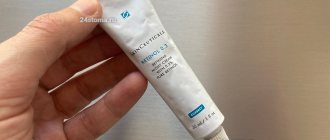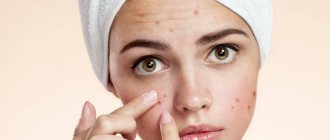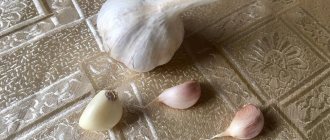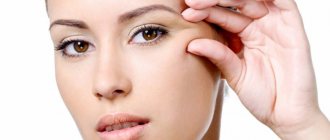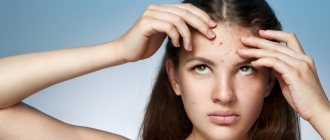Types of creams with retinol
There is an opinion that all creams with retinol belong to the category of anti-aging cosmetics. However, it is not. Initially, dermatologists used it to treat problematic skin suffering from pimples, acne and post-acne. The benefits of vitamin A are also obvious in the fight against the first signs of photoaging: dull color, uneven texture, facial wrinkles, pigmentation. Therefore, the question of at what age should you use creams with retinol cannot be answered unambiguously - it all depends on what problem you want to solve.
Day cream with retinol
Adding retinol to day creams began relatively recently. Vitamin A “does not like” ultraviolet radiation and is destroyed under the influence of sunlight. Therefore, it is best not to use creams with retinol during periods of increased solar activity or use formulas with SPF filters. Daytime face creams usually do not contain retinol in its pure form: instead, various retinoid compounds are used.
Night cream for face skin
The most popular form of cosmetics with retinol is night cream for the face. At night, photosensitive vitamin A does not need protection from the sun and acts most effectively.
Eye cream
The area around the eyes is highly sensitive and often suffers from dehydration, and retinol is known to dry out the skin. To avoid negative consequences, retinol is added to creams for the area around the eyes in small concentrations, supplemented with powerful moisturizing components: for example, aloe and hyaluronic acid.
Cream for the neck and décolleté area
Using a cream with retinol on the neck and décolleté can tighten the skin and restore its elasticity, as well as reduce the number of wrinkles.
Retinol, retinoids. Cosmetic care for correcting age-related skin changes
The main age-related factor in the appearance of wrinkles is a decrease in the production of collagen and elastin, which are responsible for the smoothness of the skin and complexion.
Retinoids are biologically active forms of vitamin A that accelerate the process of cell renewal in connective tissue. In cosmetology, they are used to reduce the manifestations of photoaging (age spots), acne, hyperkeratosis, and wrinkles.
They have proven their effectiveness as an anti-aging component. By stimulating cell renewal, they reduce the area and number of wrinkles, and also trigger the synthesis of collagen and elastin.
Retinoids are the general name for forms of retinol, substances, both synthetic and natural, which are similar in action to retinol itself and contain vitamin A, have a similar effect on cells due to their action on receptors for retinoic acid (RA).
Vitamin A derivatives are divided into four generations - the substances of the first (retinol, retinaldehyde, tretinoin) are the most effective, but at the same time they are the most aggressive. All synthetic retinoids are medicinal substances and are not allowed in cosmetics.
Retinol is the first vitamin to be discovered at the beginning of the 20th century, which is why it received the “name” of the first letter of the alphabet. Retinol is true vitamin A, it is retinoic acid.
It is synthesized in our body from products containing beta-carotene, is responsible for healthy skin and hair, good vision, bone growth and immunity, slows down aging and is involved in the formation of new cells and restoration of the skin, and fights inflammation. It is because of a lack of vitamin A in the body that immunity decreases, hair begins to break and split, nails begin to peel, and skin begins to peel.
Retinol is known for its ability to renew the skin and have a slight peeling effect, stimulating collagen synthesis in the skin. As a result, the stratum corneum softens and evens out, and the first signs of aging disappear.
There are quite a few forms of retinol; several are used in cosmetics:
for problem skin use retinal, retinoic acid and tretinoin; Anti-aging products often use retinol acetate or retinol palmitate.
The concentration of retinol in homemade anti-aging creams is usually no more than 0.1%. In more serious medicinal drugs - from 0.4% to 1%.
Benefits of retinol:
- smoothes wrinkles and creases (including deep ones);
- accelerates the process of cell formation and regeneration;
- evens out tone and relief;
- lightens age spots;
- protects against negative environmental factors (antioxidant);
- stimulates the production of collagen and elastin;
- moisturizes and retains moisture;
- increases skin turgor (elasticity);
- improves blood circulation;
- fights acne (suppresses the activity of the sebaceous glands);
- fights post-acne (as a chemical peeling).
How does retinol work?
Interestingly, it is not retinol itself that affects cells. First, it turns into an active form called retinoic acid, which is what affects the skin. Retinol itself is very unstable. When exposed to air, it instantly oxidizes and loses all its properties.
Therefore, using it in its pure form in a cosmetic product is problematic. Manufacturers have to find different ways to preserve the core functionality of a component. For example, use the least capricious forms. Retinol palmitate is considered one of the most effective.
It is placed in microcapsules or combined with stabilizing molecules. If you look at the composition, you can find a certain pattern: the more additional molecules “attached” to retinol, the longer the product will “survive” in the air. But there is also a minus: each new molecule makes vitamin A less active.
Retinol in cosmetics is considered an almost magical mixture, as it quickly solves many problems. Due to its low molecular weight, it easily penetrates the skin at the cellular level and affects the superficial and deeper layers of the epidermis.
Retinoids, due to their ability to regenerate the skin, are best used in the evening. And in the morning, be sure to apply a product with a high SPF to protect against ultraviolet radiation, because pigment spots can appear from solar radiation.
If you take a closer look at the composition of products aimed at solving various skin problems, you may find that retinol or retinoids can work either together or separately. In a duet they enhance each other's effect. Such combinations are used more often in anti-aging and whitening cosmetics, as well as in aesthetic procedures, for example, retinoic peeling.
Retinol is a capricious substance that does not like to be in second place and does not tolerate combination with acids and acne treatment components. Retinol and vitamin C do not combine so well that they even cancel each other out.
When combining drugs containing retinol and exfoliating components (glycolic, salicylic acid), keratalics or acne treatment components (antibiotics of the erythromycin class or benzoyl peroxide), you are guaranteed irritation.
Mild retinoids with caffeine are a great option for sensitive skin. With this duet they produce products for the area around the eyes, and this is the “most vulnerable” of all areas. Together they successfully fight dark circles under the eyes, fatigue and photoaging.
Trans-retinol (labeled “TR” on packaging) is a very serious type of retinol found in night serums. It successfully copes with wrinkles, increases the elasticity and density of the skin, and generally gives the face a fresh look.
The effectiveness of retinol decreases when there is too much of it.
It is better not to combine retinol in high concentrations with itself. It is possible to exceed the maximum percentage, which can even result in a chemical burn.
Retinol is “friendly” with components that enhance its positive effect on the skin (they can be classified as retinol-like): adenosine, jasmonic acid derivatives, vitamin E, tocopherol, which protects retinol from oxidation and is therefore found in almost all retinoid preparations.
Rules for the use of retinoids in cosmetic care:
- Gradual introduction of products with retinol and retinoids. If you plan to use cosmetics with a high concentration of vitamin A, then the course should begin with an adaptation period: first use the product 2 times a week, gradually increasing the frequency of use.
- It is imperative to use cosmetics containing retinol in courses to avoid side effects.
- Products containing retinol must be applied correctly. It is better to apply a cream containing vitamin A in a thin layer, as excess will oxidize, turning the skin a dirty yellow color. Retinoid cream is applied like all other cosmetics, unless otherwise stated in the instructions.
- It is necessary to apply products with SPF protection, face creams, and foundations before going outside. Retinol can increase skin sensitivity to ultraviolet radiation and pigmentation and inflammatory processes may appear on skin exposed to sunlight.
- In creams the concentration does not exceed 0.01–2%, but all skin types react to vitamin A differently. If the skin is thin and sensitive, it is better to start with a concentration no higher than 0.025%. If oily - with 0.5% (retinol can be drying and will slightly “slow down” the work of the sebaceous glands). Observe the skin reaction and gradually increase the dosage.
- Pay attention to additional components, because retinol does not work well with all components. For example, a duet with alpha hydroxy acids (AHAs) or salicylic acid will provoke severe redness and peeling. But benzoyl peroxide (may be in anti-acne products) deactivates retinol, and the product simply will not work. To minimize the negative effects of vitamin A, look for formulas with natural oils, green tea extract, vitamin C, ceramides, peptides and hyaluronic acid.
- As a rule, products with retinol are distributed by age categories: 35+, 45+, 55+, 60+. The main task of cream 35+ (retinol concentration from 0.1%) is anti-aging. Cream with retinol 45+ (concentration from 0.4 to 1%) fights signs of aging and evens out the appearance. And “after 50” products (concentration from 1%) are aimed at restoring and regenerating cells, smoothing out deep wrinkles and creases, and synthesis of collagen and elastin.
- The texture of the product matters. Choose a product based on your skin type.
- Since the active forms of vitamin A are unstable and are destroyed when exposed to sunlight, packaging and bottle are very important when choosing a product with retinol. An opaque tube or bottle is ideal.
The main contraindication is the presence of cancer. Pregnant and breastfeeding women should also not use products containing retinoids. Of course, preparations with high concentrations of vitamin A cannot be bought in stores - they are sold in pharmacies. However, it is better to consult a cosmetologist rather than prescribe retinol yourself.
Martinex peelings.
The mechanism of action of retinoic peels is fundamentally different from the mechanism of action of other chemical peels.
Retinoids do not damage the skin and do not coagulate proteins. By interacting with their own nuclear receptors of basal keratinocytes, melanocytes and fibroblasts, retinoids:
- increase the level of mitotic activity of basal keratinocytes;
- normalize the processes of differentiation and keratinization in the epidermis;
- stimulate the synthesis of epidermal lipids;
- activate the synthesis of components of the intercellular matrix of the dermis;
- normalize melanin synthesis;
- reduce the number of atypical cells.
As a result, the appearance of age-related skin changes of various etiologies slows down, pigmentation decreases, and skin texture and relief improves. Referring to superficial peels in terms of penetration depth, according to the results obtained, the BLOCK AGE PEEL CREAM peeling from the Medic Control Peel line is comparable to medium-impact peels, such as 25% trichloroacetic peel. Histological studies have shown that the stimulating effect on the cellular structures of the skin persists for another 4 months after the last application of retinoids. The formulation of the drug includes retinoic acid at a concentration of 5%, which ensures high performance of BLOCK AGE PEEL CREAM. The glycolic, phytic and ascorbic acids included in the composition also complement the action of retinoids and ensure maximum results and comfort of the procedure.
BLOCK AGE PEEL GEL - chemical peeling based on retinoic acid 5%.
It has all the advantages of drugs in this group: a complex effect on the skin and high effectiveness, which is combined with an atraumatic procedure and a short rehabilitation period. As a result of the procedure, skin aging slows down, a pronounced rejuvenating and brightening effect is provided, and the texture and relief of the skin improves.
Release form:
Phase No. 1 (2.7 ml) - 5 pcs.
Phase No. 2 (2.3 ml) - 5 pcs.
Packed in a cardboard case. For one peeling procedure, two bottles are used (phase No. 1 and phase No. 2), the contents of which are thoroughly mixed before use.
A unique feature of Block Age Peel Gel is dimethyl sulfoxide (50%), which is part of the drug, which significantly increases the permeability of all cell membranes to retinoic acid, which ensures maximum effectiveness of the procedure.
Also, dimethyl sulfoxide (Dimexide) improves metabolic processes and has a moderate local anesthetic and antimicrobial effect.
BLOCK AGE PEEL CREAM - peeling with 5% retinoic acid.
Release form: Dispenser 30 ml
It copes well with the aesthetic correction of small facial defects: wrinkles, pigment spots, post-traumatic, post-operative scars, scars after previous acne. Let's compare with medium-impact peels, such as 25% trichloroacetic peel.
The glycolic, phytic and ascorbic acids included in the product complement the action of retinoic acid and ensure maximum results and comfort of the procedure.
The complex effect of the drug on the skin and the high effectiveness of the procedure are combined with its non-traumatic nature and short rehabilitation period.
Histological studies have shown that the stimulating effect on the cellular structures of the skin persists for another 4 months after the last application of retinoids.
Proper preparation for the chemical peel procedure, as well as the use of the necessary medications during the recovery period, are extremely important to achieve the best results from the peeling procedure.
THRIPHILANBALM
Release form: Dispenser 30 ml
A restorative anti-inflammatory balm for damaged skin. It is used immediately after the procedure of chemical peeling, laser resurfacing, microdermabrasion and until the completion of the rehabilitation period.
- Quickly and completely restores damaged skin
- Normalizes regenerative processes and has a wound healing effect
- Has anti-inflammatory and bactericidal effects
- Intensely nourishes, prevents dehydration
- Eliminates erythema, symptoms of irritation and dryness, feeling of tightness
- Restores the skin's natural immunity
- Has an antioxidant effect
- Protects skin from adverse environmental factors
Active Ingredients:
- Shea Butter
- Rapeseed oil
- Coconut oil
- Tamanu oil
- Jojoba oil
- Chamomile and calendula extracts
- Retinol,
- Vitamins C and E
Directions for use: Apply to skin daily 2 times a day or more often.
Release form: Tube 50 ml
Prepeel Active cream is intended for regular care of aging skin with signs of premature aging and hyperpigmentation.
It is also ideal as a preparatory agent for chemical peeling procedures, laser resurfacing, and photo procedures.
General action:
- reduces and smoothes the stratum corneum
- normalizes pigment synthesis, reduces the risk of post-peeling hyperpigmentation
- stimulates the regenerative processes of skin cells
- increases local skin immunity
Active Ingredients:
retinol (vitamin A) - stimulates cellular renewal processes, providing a general rejuvenating effect, helps restore and strengthen epithelial cells. Promotes rapid renewal of the epidermis, reduces pigmentation and improves collagen synthesis, normalizes the function of the follicular epithelium, and has a sebum-regulating effect
Vitamin E is a powerful antioxidant, slows down the aging process, has an anti-inflammatory effect, and actively heals skin damage. Refreshes the skin, restores its water balance, protects against the harmful effects of UV rays and acts as a natural preservative.
Vitamin C is a powerful antioxidant that refreshes and rejuvenates the skin, evens out complexion and reduces pigmentation. Soothes sensitive skin prone to irritation and inflammation
Milk proteins are active protein complexes that have strong softening, regenerating, moisturizing, anti-allergenic and anti-inflammatory properties.
Angustifolia fireweed extract - has an anti-inflammatory effect, stimulates metabolic processes, and is a powerful antioxidant
Rapeseed oil – contains vitamin E, which protects the skin from damage caused by the external environment
VEGELIP
Format: tube 50/200 ml
A universal product for the care and protection of skin with a damaged barrier. Ideal for irritated and damaged skin. The active ingredients of the cream promote rapid regeneration, deep intensive hydration and restoration of the skin, including after aggressive procedures (after peeling, laser therapy and microdermabrasion). The cream has an antioxidant effect, stimulates cellular regeneration, and reduces wrinkles.
Active components:
- German sesame oil,
- retinol,
- vitamins E and C
- natural moisturizing complex
SEMTEMPOCREAM
Format: tube 50ml
ANTI-AGING CREAM
Complex cream for the correction of wrinkles and hyperpigmentation. Recommended for maintaining the results of chemical peels.
- Eliminates fine wrinkles
- Slows down the skin aging process
- Increases skin tone and turgor
- Stimulates the synthesis of your own collagen
- Normalizes melanin synthesis, brightens the skin
- Provides optimal levels of skin hydration
- Neutralizes free radicals
- Accelerates cellular renewal processes
Active Ingredients:
- Natural Moisturizing Complex (NaPCA)
- Phytic acid
- Milk protein
- Bearberry and green tea extracts
- Neutrazen TM (Palmitoyl tripeptide-8)
- Retinol,
- vitamins C and E
Directions for use: Apply cream to dry, clean skin 1-2 times a day. To maintain the results of chemical peeling, the cream is applied daily (according to a certain scheme).
FOR PURCHASE QUESTIONS, CONTACT THE MANAGERS OF THE TRAINING AND CONSULTING CENTER
Educational phone numbers : 8-812-248-99-34, 8-812-248-99-38, 8-812-243-91-63, 8-929-105-68-44
Application for ordering products here
Seminar schedule here
What is vitamin A
Without this unique substance, the normal functioning of the human body is impossible. Vitamin A as a natural compound occurs in several forms, each of which has its own effect. The group of substances that perform biological functions includes:
- retinol;
- retinoic acid;
- carotene;
- retinol acetate;
- carotenoids;
- xanthophyll;
- retinol palmitate;
- retinal.
This fat-soluble substance has the ability to accumulate in the body and have a beneficial effect on it. Active connection:
- participates in the formation of epithelium, which ensures the healthy state of mucous membranes and protection against infections;
- promotes the formation of the body at a young age due to the production of proteins in cartilage and joint tissues;
- necessary for the functioning of the retina of the eyes - it forms the pigment rhodopsin, which helps adapt to light;
- ensures the strength of the skin by supporting the elasticity of the fibers;
- improves embryo growth.
Various forms of connection contribute to:
- fight inflammation, being antioxidants;
- production of adrenaline;
- proper functioning of the genital organs;
- increasing immunity;
- collagen production;
- getting an even tan;
- prevention of cancer;
- ensuring hair elasticity;
- improving the condition of the skin and teeth;
- preventing early aging of the dermis;
- increasing the strength of nails;
- nutrition of the skin;
- synthesis of hormones;
- prevention of night blindness;
- stopping early graying;
- prevention of infections.
Contraindications
Vitamin A will not cause harm to the face if the requirements for its use are taken into account. There are a number of restrictions on the use of this drug. Contraindications for the use of retinol are:
- skin diseases;
- allergic reactions to the drug - nausea, vomiting, rashes, liver enlargement;
- damage to the epidermis, accompanied by bleeding, purulent discharge;
- presence of subcutaneous mites;
- pathologies in the functioning of the circulatory system.
This drug can be used with caution, and only in consultation with a doctor, during pregnancy - excess retinol is dangerous for the embryo and can cause developmental disorders. You need to know that an overdose causes the following problems:
- increased sensitivity to sunlight;
- increased irritation of the epidermis;
- increased inflammatory process in the presence of acne.
Benefits for the face
Carotenes usually enter the body with food - these are carotenes that are converted in the blood into an active vitamin. Penetrating into the skin, retinol has the following effects:
- Activates capillary blood flow in the epidermis and dermis.
- Relieves inflammation, including helping to fight acne.
- Neutralizes harmful and toxic substances.
- Stimulates skin cell regeneration.
- Eliminates hyperpigmentation.
- Has a significant antioxidant effect.
- Makes the skin more resistant to negative external influences such as ultraviolet radiation, dry air, and negative temperatures.
- Stimulates the formation of collagen and elastic fibers.
With daily consumption of the required amount of vitamin A, your facial skin will always look beautiful, well-groomed and healthy. With a deficiency of the element, there is a risk of acne and premature wrinkles.
To eliminate hypovitaminosis, it is necessary to normalize your diet and take a course of special medications, which should be selected by a doctor. You can also use creams and serums with retinol to treat problem skin not only from the inside, but also from the outside.
Vitamin A for wrinkles
Retinol eliminates free radicals that cause skin aging. The vitamin also stimulates the penetration of nutrients into the cells of the dermis and epidermis. As a result of these processes, the skin, even in adulthood, becomes more elastic, toned and attractive. Thanks to retinol, you can smooth out even deep wrinkles and get rid of superficial ones completely. However, it should be remembered that skin care must be comprehensive and continuous.
For acne
Vitamin A helps fight acne due to the fact that it normalizes metabolic processes in skin cells, the functioning of the sebaceous glands and eliminates excess sebum secretion. With proper and regular use of products with retinol, you can quickly get rid of acne and forget about them forever.
For lips
When caring for their facial skin, many women forget about their lips, and they also need nutrition and hydration. A balanced diet and the use of balms containing vitamin A help get rid of the feeling of dryness and damage.
If your lips take on an unnatural shade and begin to crack, it means there is a deficiency of retinol in the body that needs to be replenished.
Retinol acetate and retinol palmitate –
Retinol acetate is the weakest even when compared to other retinol esters. It is not included in cosmetic products, but in pharmacies it is sold either in the form of capsules or in the form of a 3.44% solution (in the form of a dropper bottle). Very often you can hear recommendations - apply a few drops of retinol acetate to your face, or add it to your cream. Of course, you can do this, but the maximum that this will give is an increase in skin hydration by increasing its hydrophobic properties, as well as a decrease in the thickness of the stratum corneum.
Retinol palmitate (retinyl palmitate) - sold in every pharmacy in the form of an oral solution. 1 ml of solution contains 100,000 units of retinol palmitate, which corresponds to approximately 55 mg, and thus the concentration of the solution is 5.5%. Some also recommend applying it to the face or adding it to a cream. But if compared with pure retinol, then retinol palmitate turns out to be about 20 times weaker than it, but due to its low cost and high stability, it is most often included in inexpensive cosmetics in the mass market segment (which is not intended for the correction of pronounced age-related changes).
The fact is that in the skin, retinol palmitate is converted only to a very small extent into pure retinol, which, accordingly, practically does not reach the dermis, where the main target cells - fibroblasts - are located. Retinol palmitate is primarily absorbed by keratinocytes (the cells of the epidermis), which have systems for storing it. The accumulated retinol palmitate is used by keratinocytes for their own needs - increased proliferation of stem keratinocytes occurs near the basement membrane + the thickness of the deep layers of the epidermis increases.
In addition, the thickness of the stratum corneum of the epidermis, consisting of dead keratinocytes, decreases. All of the above can improve skin tone and texture. Perhaps the smallest fine lines will go away, but not due to increased collagen production in the dermis, but due to a decrease in the thickness of the stratum corneum of the epidermis (peeling effect). But you should not count on reducing the depth of wrinkles, lifting the oval of the face, as well as a noticeable increase in skin elasticity. For this, it is no longer retinol palmitate that is needed, but more active forms of vitamin A.
Interaction with other drugs
The vitamin should not be taken during long-term use of tetracyclines. Violation of this recommendation may result in increased intracranial pressure. The absorption of vitamin A is reduced during the use of cholestyramine, colestipol or mineral oils, which may lead to an increased need for the vitamin. A similar effect is observed when taking vitamin E. Its consumption in large quantities reduces the duration of vitamin A storage in the liver and reduces the effectiveness of its use. At the same time, it also has a positive effect associated with a decrease in the toxicity of retinol, which, on the contrary, increases with the use of isotretionine. Preoral contraceptive drugs can lead to an increase in the concentration of vitamin A in the blood plasma.
Effect on the skin
Cosmetologists note the effectiveness of retinol in caring for mature skin. The substance is indispensable after 35 years, when active processes in the body that maintain the youth of the epidermis slow down. When used regularly in the form of masks, retinol helps:
- moisturize the skin;
- produce your own collagen to maintain the elasticity and smoothness of the dermis;
- restore youthful skin;
- improve complexion;
- relieve inflammatory processes.
Vitamin A helps:
- the production of hyaluronic acid, which restores the skin structure, filling the dermis with elasticity and freshness from the inside;
- accelerating cell regeneration;
- protects the body from free radicals, thereby slowing down aging and maintaining the elasticity of the epidermis;
- eliminating fine wrinkles;
- facial contour correction;
- treatment of skin rashes;
- protection from the aggressive effects of ultraviolet radiation.
